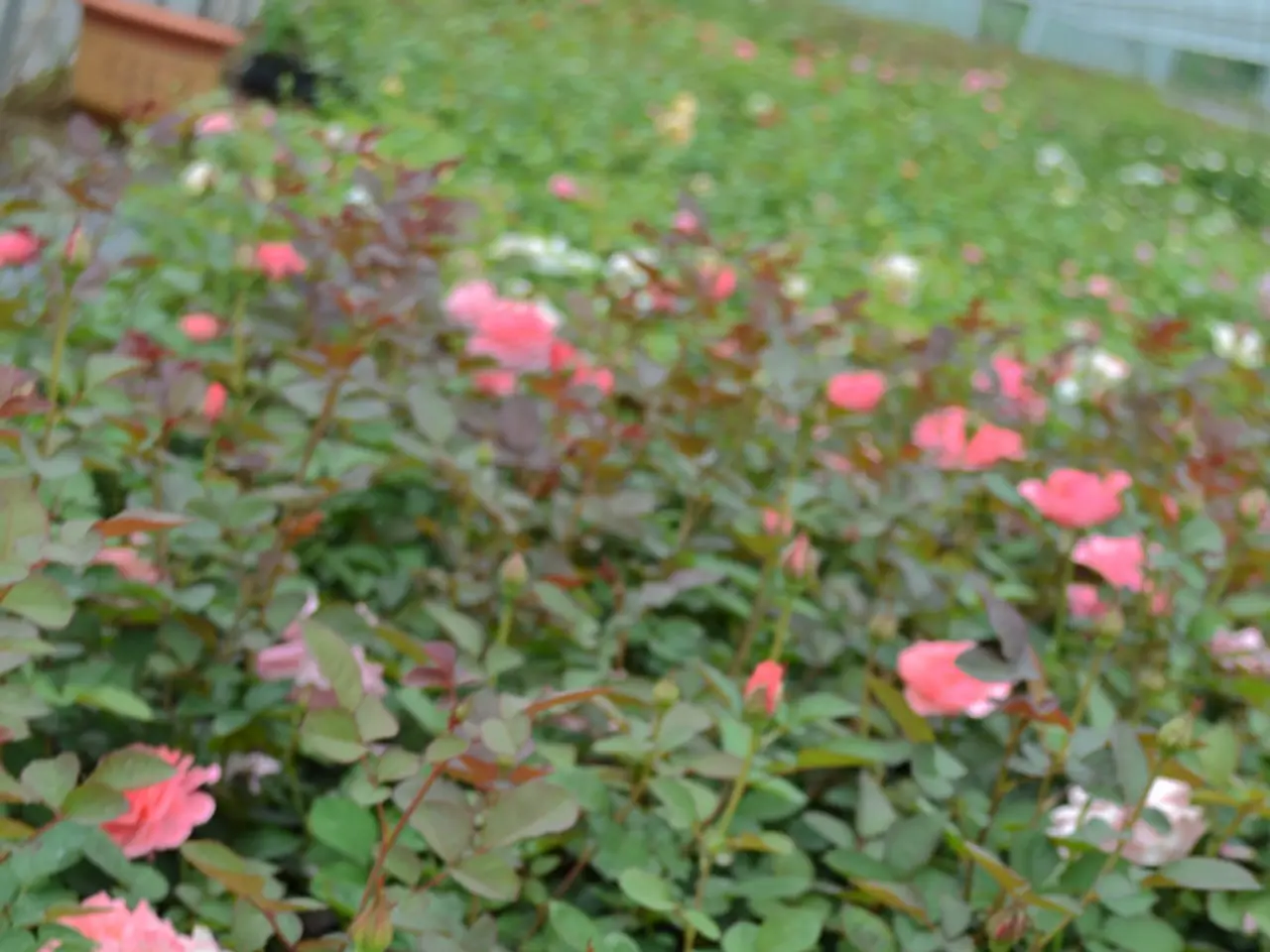Autumn's stunning, delicate blossoms perfectly capture the season's hues
Article Title: Discover the Charm of Cyclamen: A Guide to Growing and Caring for These Enchanting Plants
The enchanting cyclamen, with its distinctive leaves and captivating flowers, is a delightful addition to any garden or indoor space. These tuberous perennials, native to the Mediterranean and southern Europe, are primarily found growing in deciduous woodland, scrubland, and rocky areas.
Cyclamen Habitat and Pests
Cyclamen thrive in a variety of environments, from cooler woodland areas to sunnier scrubland and rocky regions. However, the only serious pest that affects cyclamen, particularly those grown in pots, is the vine weevil. A biological control is available, but it works best during the warm summer months.
Growing Cyclamen: Key Conditions
To ensure healthy plants with strong blooms and minimal problems, it's essential to provide the right conditions. These include partial sun to light shade, cool temperatures, well-draining soil that retains some moisture but is not soggy, light watering, and monthly fertilization during the growing seasons.
Indoors, cyclamen plants prefer cooler environments, such as near a bright window without direct sunlight or slightly cooler indoor rooms, avoiding heat vents or overly warm spots. Outdoors, certain cyclamen varieties like Cyclamen persicum do well in partial sun and can tolerate some temperature changes without sunburn. Persian violet cyclamen (Cyclamen coum) prefers full sun to light shade and free-draining soil that stays moderately moist during summer but not waterlogged.
Popular Cyclamen Varieties
Cyclamen hederifolium 'Lysander' is a popular choice, with deeply serrated, almost holly-like leaves and pale-pink flowers from August to October. It grows to 10cm tall and has an RHS rating of H5. Another favourite is Cyclamen coum, which flowers in the depths of winter, with round leaves and small flowers in white, pink, or magenta.
Cyclamen cilicium, a lesser-known autumn-flowering cyclamen, is hardy and will naturalize in light shade, making it a good winter feature. Cyclamen can be propagated only from seed, with the seeds held in capsules on the end of spring-like stems that unwind to deposit the seed as close to the ground as possible, increasing the chances of germination.
Notable Cyclamen Cultivars
Cyclamen coum f. albissimum 'Lake Effect' boasts pure-white flowers with no colouring on the base of the petals, deep green leaves with a leathery texture and no markings, and flowers from late December. 'Tileburn Graham' features deep-pink flowers each with a dark-magenta blotch at the base of the petals, and are held above pewter-coloured leaves.
The Silver Group of Cyclamen coum subsp. coum offers attractive silver-grey cyclamen foliage with a rounded shape and slightly serrated edge. The flowers, from early winter to early spring, are generally shell-pink, but deep-magenta to rose-pink shades and white forms do occur. Cyclamen coum subsp. coum f. coum 'Roseum' has pale-pink flowers held above small, rounded leaves, and appears from December to March.
The best forms of Cyclamen coum subsp. coum have pewter leaves that have a thin margin and central midriff of green. The flowers range from pink to deep magenta, opening in late winter and spring. Cyclamen confusum, an autumn-flowering species that originates from the island of Crete, has slightly larger flowers than other cyclamen species, a honey perfume, and glossy leaves.
Growing cyclamen is a rewarding experience, as these charming plants can brighten up any space with their beautiful flowers and attractive foliage. With the right conditions, cyclamen can be a long-lasting addition to your garden or indoor collection.
- The distinctive leaves and captivating flowers of cyclamen make them a delightful addition to gardening spaces, as well as being a popular choice for interior landscapes.
- For successful cyclamen cultivation, it's essential to replicate their natural habitat by providing environments with partial sun to light shade, cool temperatures, and well-draining soil that retains some moisture.
- When it comes to popular cyclamen varieties, Cyclamen hederifolium 'Lysander', with its pale-pink flowers and serrated leaves, is a favorite for many gardeners, while Cyclamen coum offers small flowers in various colors and can be found flourishing in full sun to light shade.
- Incorporating cyclamen plants into your lifestyle not only beautifies your home and garden but also contributes to the broader fashion-and-beauty and food-and-drink scenes, as these tender perennials can enrich travel experiences when encountered in their natural habitats.
- Growing cyclamen is more than just a hobby; it's an engaging activity that brings together elements of nature, including garden, home, and travel, promoting a harmonious lifestyle and creating an appealing food-and-drink atmosphere for gatherings and events.




